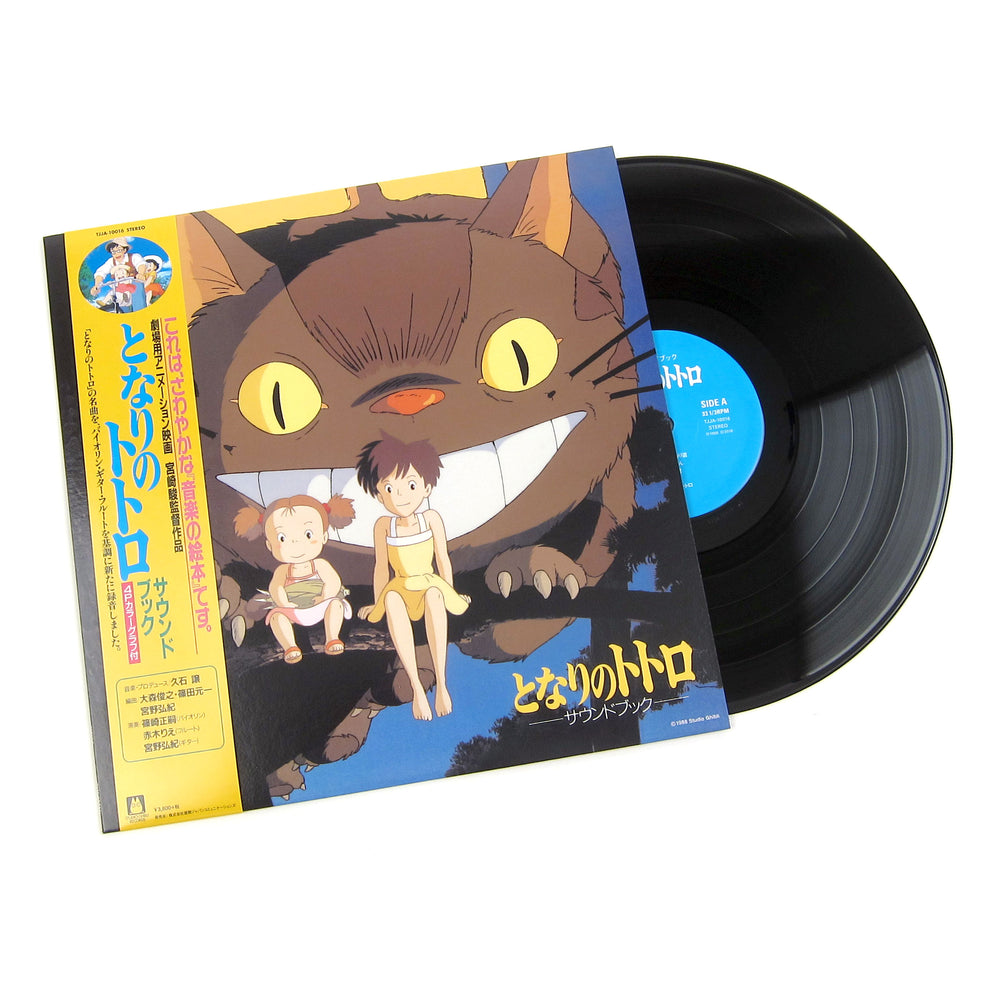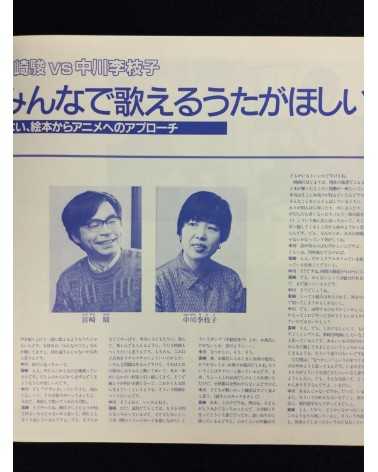

“ Mother” is based on Inoue’s warm vocalizing. Opening theme “ Hey, Let’s Go” really sounds like a warm-up for a parade. She contributed four songs to My Neighbor Totoro. She’s also made herself heard on the soundtracks to the other Ghibli productions: Laputa: Castle in the Sky and Kiki’s Delivery Service. In this case it was a singer, Azumi Inoue. Finally, there is “ A Haunted House!” that sounds more or less like disco or maybe even, ahem, house. A good example is “ Cat Bus“-named after the iconic mode of magical transportation.
#Joe hisaishi my neighbor totoro full
These are also many tracks full of cheerfully sounding wind instruments-the kind of music mostly associated with circuses and burlesque. Pastoral “ The Village in May” is worth a listen, as well as the plaintive “ Mei Is Missing“. The pomp present in this track is absent from the rest of the instrumental score. Its most prominent version is probably “ The Path of the Wind”. He certainly lived by his words-one of the memorable motives he wrote for My Neighbor Totoro shows up in six places. He quoted Henry Mancini’s “Moon River” as an example. Hisaishi wrote in his memoirs that he believes in the power of a strong musical theme that ties the whole film together.
#Joe hisaishi my neighbor totoro movie
He composed music for 1998 Winter Paralympics and an acclaimed 2008 movie Departures. Soundtracks for Studio Ghibli made him famous but he had also other successes. He already published that work as Joe Hisaishi which is a sort of Japanese pun on Quincy Jones. At the time of Totoro’s premiere he had also two solo electronic albums under his belt. His adventure with scoring anime started in 1974. The real name of the man who composed the music to My Neighbor Totoro is Mamoru Fujisawa. Maybe Totoro is too kids-oriented for me or I need more surrealism in my movies? Strength in Repetition Still I think that at least Spirited Away and Howl’s Moving Castle outshine it among the Ghibli output. These are all the markings of a classic movie, confirmed by the award for the Japanese Film of the Year and the high scores in Time Out and Sight & Sound polls. The theme of the sometimes uneasy relationship between humanity and the rest of nature returns in many subsequent works of Miyazaki. A good example of this is the scene of spirits planting the trees and Totoro subsequently taking the girls on a flying top ride. Blurring the borders between a dream world and reality is undoubtedly one of the strengths of My Neighbor Totoro. Later in the film, the older sister is gravely worried when Mei disappears during a visit to the hospital. Everyone probably recognizes the image of him standing in the rain at the bus stop under the umbrella lent by Satsuki. Being cuddly and strikingly unusual, Totoro quickly became the Ghibli’s internationally recognizable mascot. This gives them the opportunity to meet local forest spirits, including a big ball of fur from the title.

They move to the country with their father to be closer to the hospital where mom stays. The girls named Satsuki and Mei are separated from their mother due to her illness. The characters from My Neighbor Totoro also go through a lot of hardship but their existence is far from hopeless. Takahata’s movie is a heart-breaking recollection of the Japanese defeat in the World War II and the toll it took on the nation’s children. Then on 16th April 1988 came both Takahata’s Grave of the Fireflies and Miyazaki’s My Neighbor Totoro. The first Ghibli production was Castle in the Sky in 1986. Lofty ambitions were founded on the experience that those two authors and their producer Toshio Suzuki were gathering from the 1960s. Miyazaki and the other director involved-Isao Takahata-believed they would power through the world of animation like a hurricane.

The name of the company was derived from the Italian word for a hot desert wind. Studio Ghibli was formed in 1985 to capitalize on the success of Hayao Miyazaki’s anime Nausicaä of the Valley of the Wind. That’s where Studio Ghibli and Joe Hisaishi enter the picture and My Neighbor Totoro was born. Sweetness seems a good approach to the music for kids. I wrote a little about it on this site recently. The US had hair metal ballads, but the trend was even more widespread in other territories. Late ’80s might be the era of Guns N’ Roses and Public Enemy, but mainstream music of that time was mostly sickly, unapologetically sweet.


 0 kommentar(er)
0 kommentar(er)
